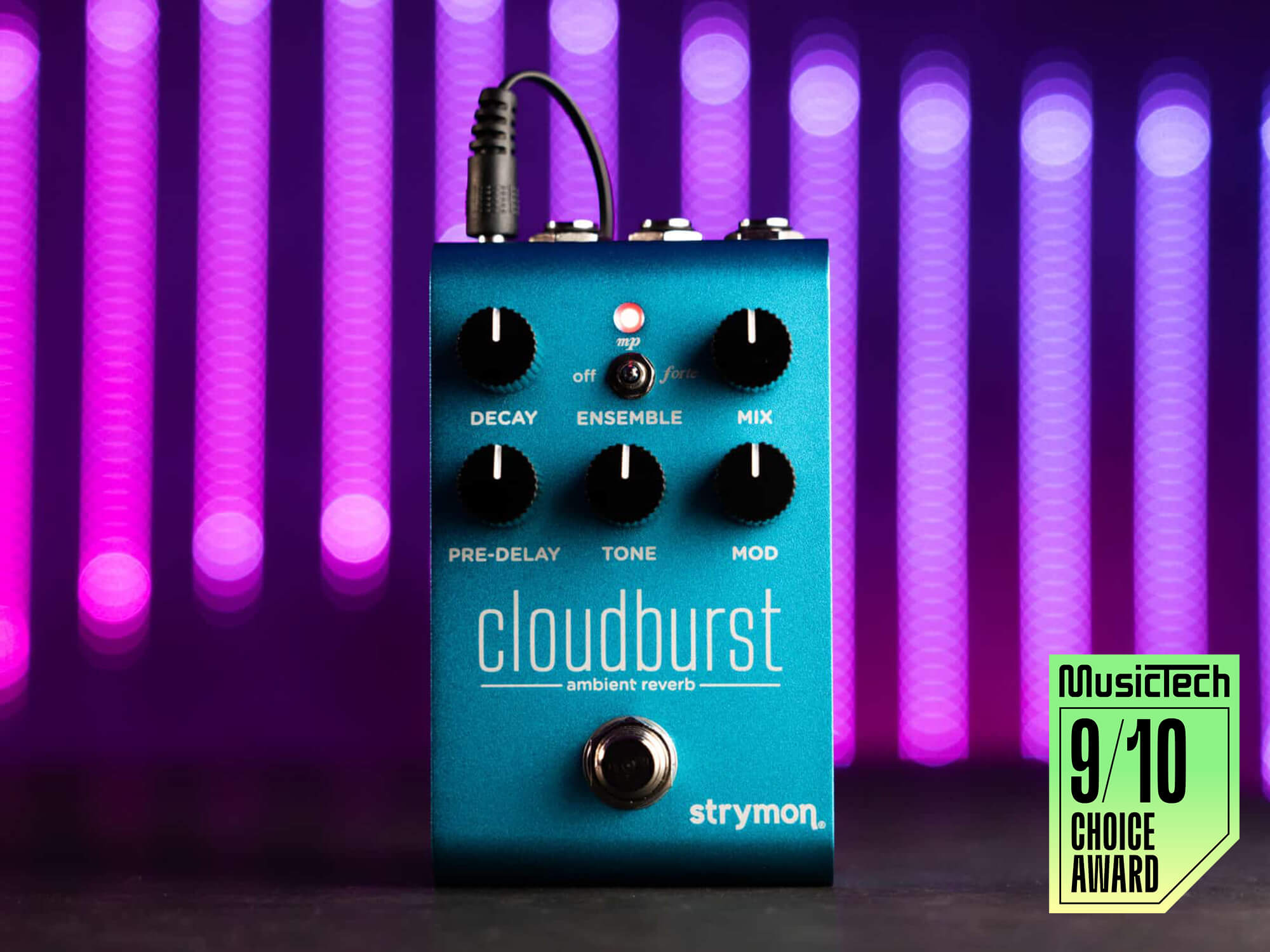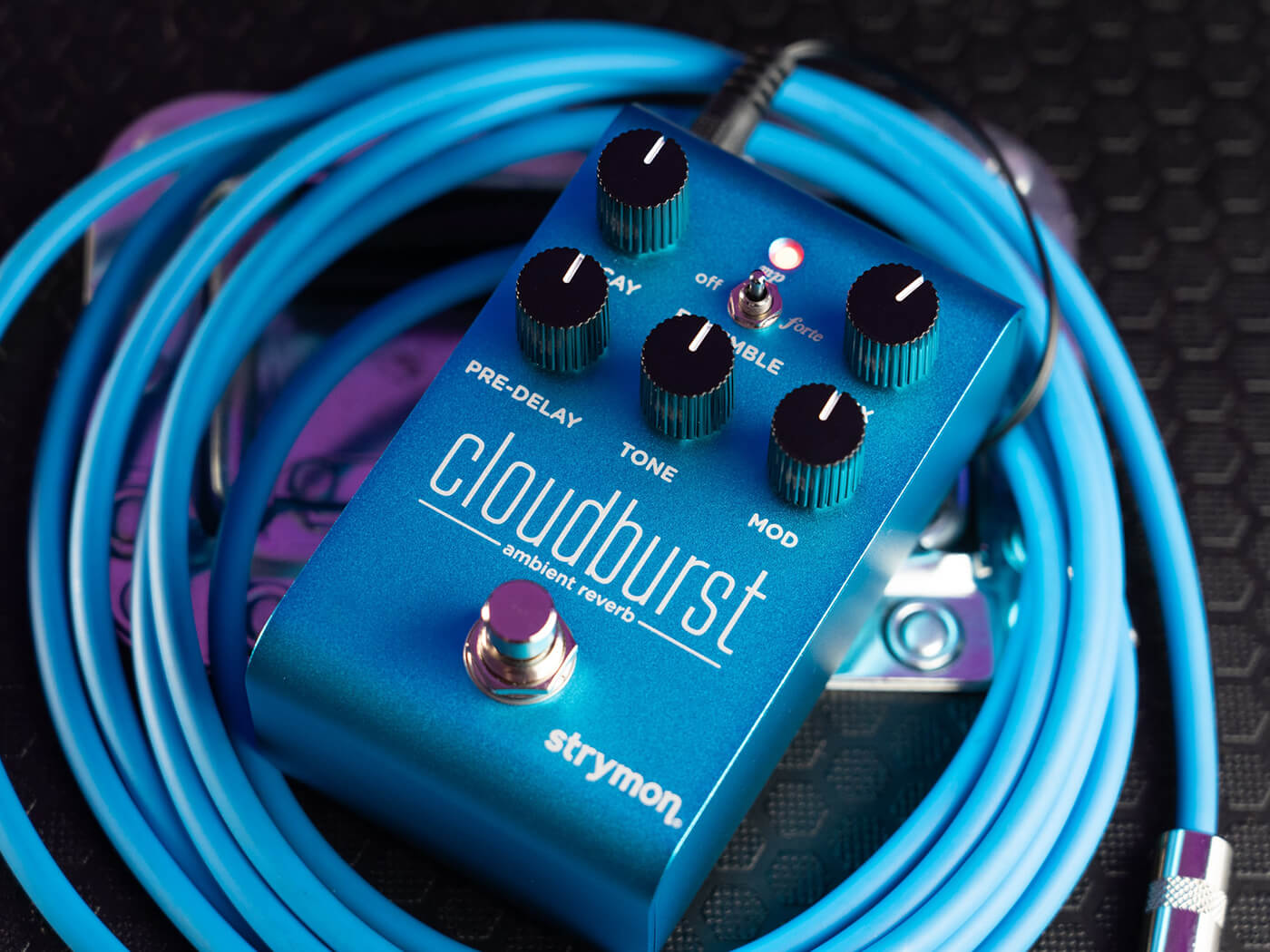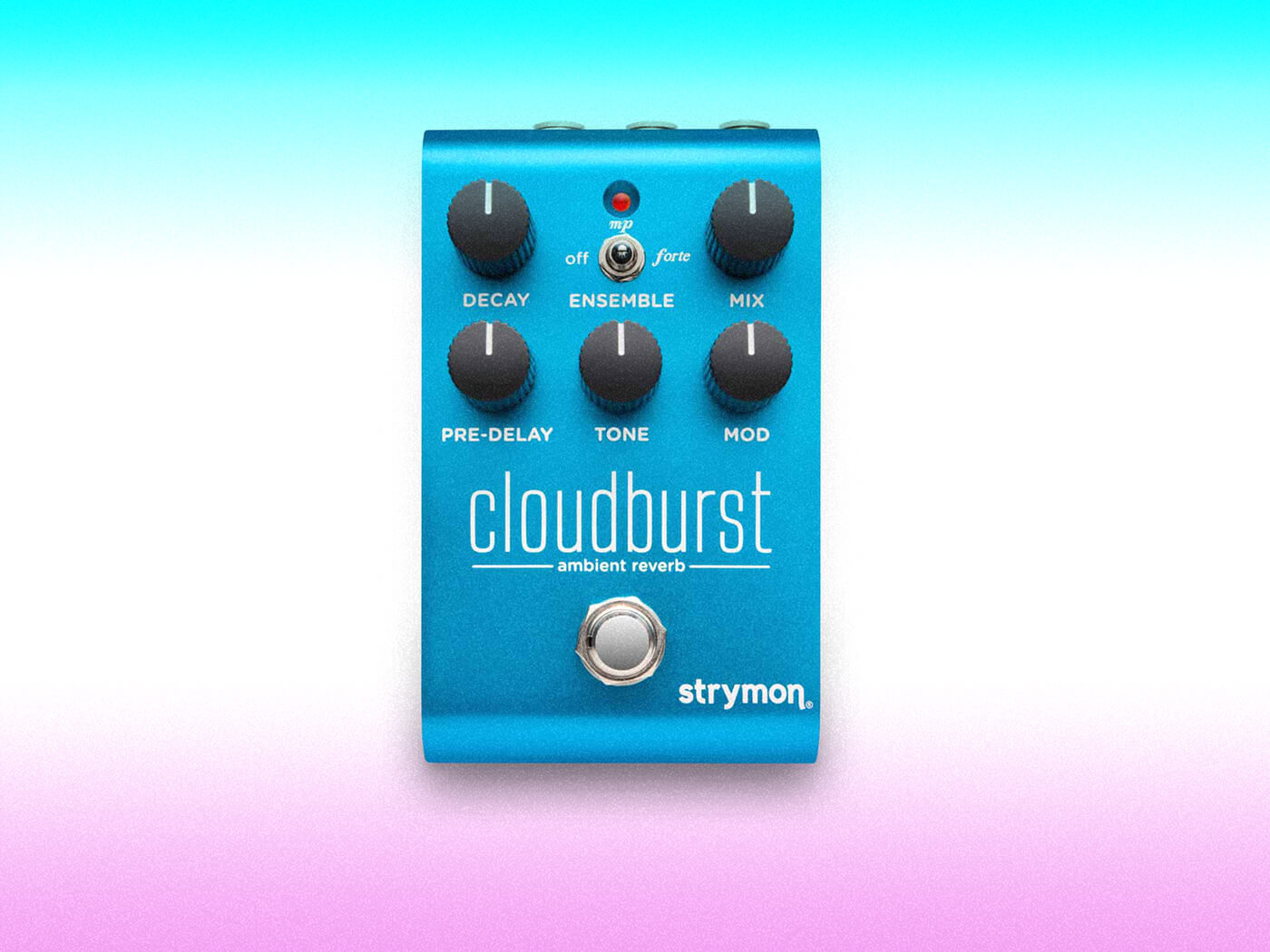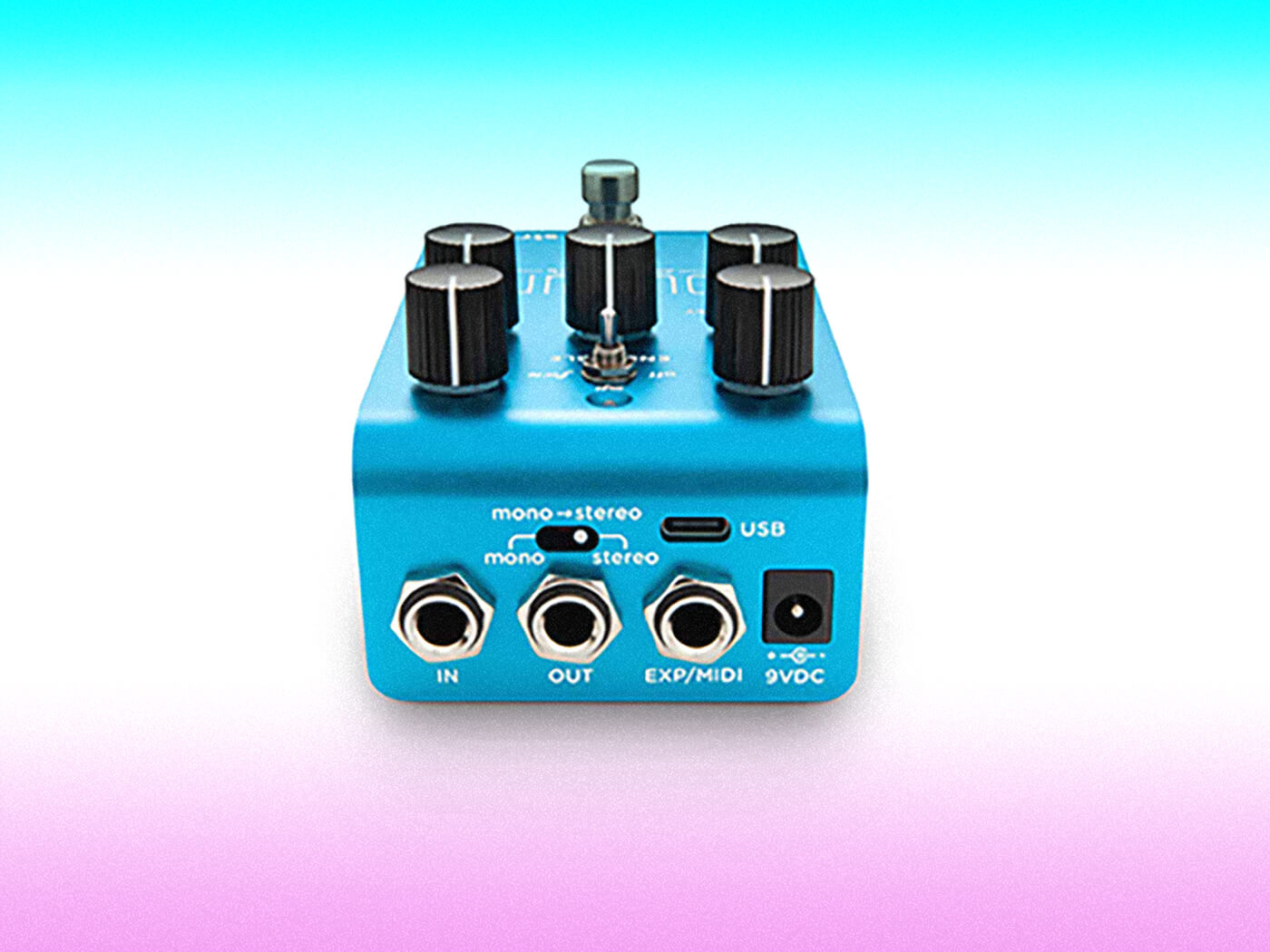Strymon Cloudburst reverb is a washy wonder for the pedalboard and studio
Pedal brand Strymon has led the way for reverb effects for over ten years. Can the new baby in the family continue its legacy?

Image: Strymon
Review Overview
Our rating
9
Our verdict
⊕ Wide range of reverb sounds
⊕ Pedalboard friendly
⊕ Precise control of reverb length and mix
⊕ Ensemble feature is genuinely unique
⊖ No separate speed/depth modulation controls
⊖ MIDI via quarter-inch TRS Jack
Strymon’s Sky range has been around for over a decade. The pedals are as ubiquitous as ever on the pedalboards of high-profile musicians and don’t seem to be going anywhere. In 2022, Strymon released a plugin version of the flagship BigSky hardware – our review here – and now comes the Cloudburst.
READ MORE: The LAVA ME 3 guitar has effects and a loop pedal built-in – is it the end for stompboxes?
The American brand describes Cloudburst as an “ambient reverb,” but as you’ll learn soon, that’s only half the story. The pedal is coloured in the same distinctive metallic blue as its siblings but is noticeably smaller than any Strymon pedal that has come before. This appears to be a new form factor for Strymon; the Cloudburst is a single stomp box housed in an attractively-curved unit, slightly smaller than the classic Boss compact series.
The pedal packs a lot into its small enclosure with the footswitch, five rotary knobs and a mini switch on the top. Meanwhile, TRS stereo in/out sockets, you’ll find a stereo mode switch, a jack expression/MIDI input, the 9v PSU socket and a USB-C socket for updating firmware on the rear panel. Despite everything going on, the overall package feels surprisingly light.
The sounds
All sounds are recorded clean and direct, with a Fender guitar amp emulation applied in the mix. No other effects have been used.
Although you can run anything through an effects pedal, a lot of producers will use this for guitar, so we’ll start there. The first sound we explore is with all controls set to the 12 o’clock position and the ensemble mode switched off. The result is a long, luscious reverb that’s like a combination of a hall and a plate with a hefty decay time. Interestingly, with the pre-delay and decay controls rolled to a minimum, quite a passable room reverb can still be created.
Having used the Cloudburst’s older and larger counterpart, the BigSky, the effect feels reminiscent of some of the more ambient algorithms on that pedal (labelled Bloom and Cloud). These too create big, wash-like textures beneath the incoming dry sound. The reverb does, as Strymon claims, create a big ambience, but the sound isn’t overpowering and the dry signal cuts through cleanly without being swamped by the tail.

The unique selling point of the Cloudburst is the ensemble function. This adds an additional, pad-like layer that follows the incoming audio, sounding like a subtle string section. There are two levels available here labelled MP and Forte (moderately quiet and loud respectively, in music theory speak). These seem to affect both the relative volume of the additional harmonisation but also the attack of the sound, as true dynamics on a string instrument do. Both settings are usable, however, we find ourselves favouring the MP setting for a little more subtlety.
With the ensemble feature switched on, the other controls need subtle adjustment. We find that the wet mix becomes a little overpowering at 12 o’clock with the ensemble enabled, and have to dial this back down. The ensemble also benefits from a little more modulation to add subtle movement to the wet signal.
Keyboards
One of our favourite sounds is a Fender Rhodes with a long decay, so this seems like the perfect test for the Cloudburst. The reverb fills out the electric piano sound around the sparse chords and melody lines, creating a lush texture normally reserved for soft synths with plugin effects. To be able to create this entirely with hardware is lovely. The Rhodes sounds are well-enhanced by the modulation function, and that subtle movement really brings the instrument to life. The ensemble function tracks the keys perfectly, but it does take longer to balance the wet/dry level than the guitar.

Extra bits
As with a lot of the smaller Strymon pedals, there are secondary functions available by holding down combinations of controls during the power-up cycle. These are largely to change the basic functions of the pedal (analogue/digital dry-through; true bypass/buffered bypass, etc) and aren’t really functions that you’ll want to be adjusting regularly.
However, there is one function that is sorely missed when compared to previous pedals: separate controls for the speed and depth of the modulation. Here, a single modulation control adjusts both simultaneously, and no amount of deep-diving into the manual and secondary functions allowed us to adjust them separately. This tweakability could easily have been added as a secondary function and is hopefully something that can be remedied in an upcoming firmware update.

Strymon’s Cloudburst is fully MIDI compatible, and this functionality allows access to presets within the pedal via program change commands and the ability to adjust any parameter on the pedal via continuous controller data. Awkwardly, a quarter-inch TRS jack is required for the MIDI connection which is unusual. Many pedals still use five-pin DIN or eighth-inch mini-jacks when space is even more limited (Boss etc.). The choice of quarter-inch is the same as their other small pedals but does require investment in quite an expensive adaptor, or getting out the soldering iron to make one.
Truly, the Cloudburst is an excellent pedal. The textures it creates underneath chords and melodies means it has already become a permanent resident on our own pedalboard for all sorts of tasks. There are pedals from a number of manufacturers that specialise in ‘ambient’ reverb pedals, including Strymon themselves, but nothing quite like this with its ensemble function. The ability to fill out an instrumental part with a big wash of sound means that ambient textures can now literally be created at the push of a button.
Strymon Cloudburst reverb pedal is available for £279 at strymon.net
Key features
Variety of reverb lengths
Ensemble mode
Modulation
MIDI compatible
Expression pedal control
Stereo ins and outs